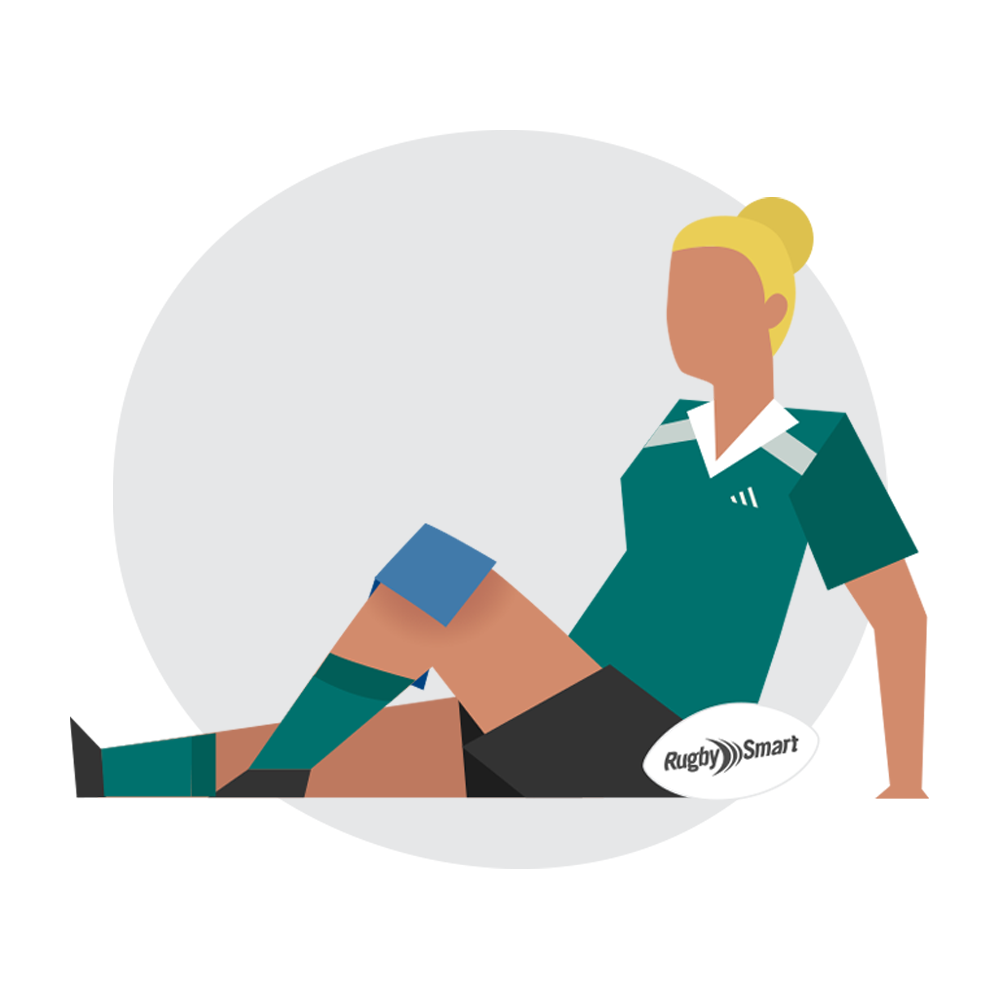- Rugby Toolbox
- RugbySmart
- Injury and concussion
- Injuries and Rehab
Injuries and Rehab
The general principles of caring for an injured player are:
1. Do no further harm
2. Take control
3. Avoid unnecessary movement
4. Speak to the player
5. Call for help if needed
6. Ensure more experienced help is on the way
7. Recognise when you need to do more, which may include calling an ambulance
INJURIES
Soft tissue injuries are the most common injuries in rugby for players.
They are a major source of pain and disability. They're mainly sprains, strains, tears and bruises that affect ligaments, tendons and muscles.
Once an injury has occurred, it is very important that the injured area and the player are protected from further injury. Failure to do so can aggravate the problem and delay healing.
• Abrasions and lacerations need to be covered
• The injured joint should be supported by taping or bracing
• Weight-bearing should be avoided
ICING INJURY
Players can recover quicker from these injuries if they follow the five-step treatment process - Remember: R.I.C.E.D.
The first 48 hours after an injury are critical, so make sure you don't cause any more HARM than you already have.
So, avoid Heat, Alcohol, Running and Massage. These will all make things worse.
MOVING A PLAYER ON THE GROUND
A player is knocked out cold. Do we move them or not?
The first thing to think of is your first aid skills. ABCs - meaning Airway, breathing and circulation. If all these are fine, then have someone hold the player's head in a neutral position until he or she becomes conscious, and someone qualified comes to their aid.
If the player is breathing, but still unconscious, the best thing to do is to leave them until this qualified person arrives. Tell your players this because it could be disastrous if they just ‘roll them over!’
Rehabilitation
Rehabilitation focuses on restoring the player’s full functions and rugby-specific abilities to prevent re-injury and encourage their best possible performance.
In this phase the player should be building up muscle strength around the injured area, working towards getting the full movement back in the joint, getting their balance back and keeping fit through activities like swimming and cycling.
Once they are ready they need to gradually build in light rugby-specific skills and drills, extending themselves at training only as much as the injury allows.
THE PLAYER NEEDS SUPPORT TO:
- Restore strength.
- Restore range of motion.
- Restore co-ordination and control.
- Restore balance.
- Maintain fitness.
- Build confidence.
- Restore their rugby-specific ability.
RETURNING TO PLAY
This is when the coach, doctor or physiotherapist puts a player through a set of tests to see if they are ready to get back out on the field.
These tests should be a combination of those you used for the fitness tests at the start of the season and rugby skills and moves that the player will have to make during a game – like side stepping and tackling.
You can use the Player Profiling information you recorded earlier in the year to see whether a player is ready to return to play based on a comparison of performance.
Remember – if players continue playing with an injury they increase the chance of a further, more severe injury.